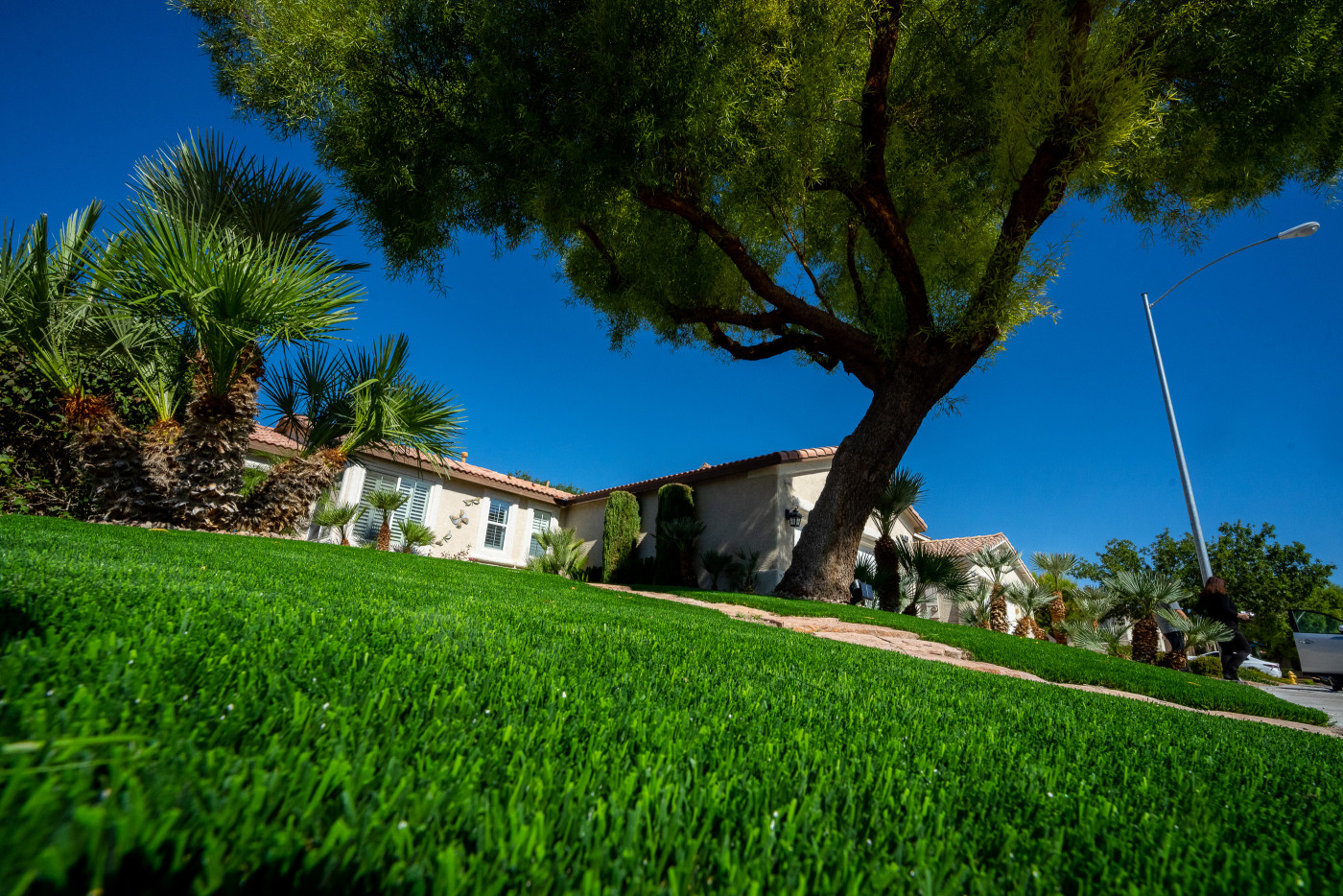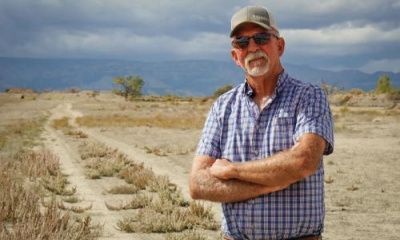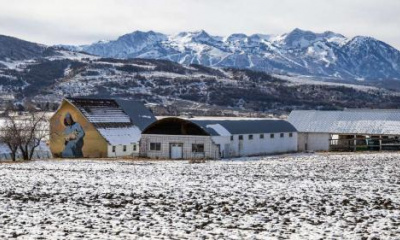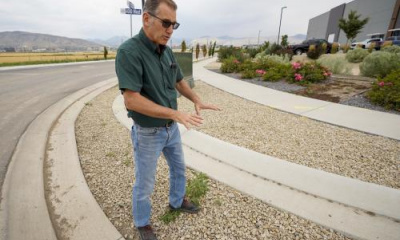NORTH LAS VEGAS, Nevada — Patricia Council stood on her front yard and smiled, glad to see her lawn finally go.
“I decided to convert it, number one because of the water issue,” she said. “Water is going up around here so it’s costing quite a bit of money.”
In the summer, Council said she would pay as much as $165 a month to water her front lawn. The Southern Nevada Water Authority is paying her $3 a square foot to get rid of her turf, and landscaping crews that contract with the agency are tearing out the grass.
“I don’t have anybody to help me much. So I just need to do as least maintenance as possible and make it look pretty,” Council said.
Listen to a radio version of this story
As landscapers ripped out sod, rolls of artificial turf were stacked nearby. Council has decided to have artificial turf and desert rock installed. She will keep flowers that she has growing in pots around her yard. A tree shades the majority of her front yard and palms are growing nearby.
“You know you’re not really walking on grass but it’s not that much difference. It’s soft and nice,” Council said of artificial turf.
Council said she’s glad to see her water bill dramatically drop. Her lawn will still look green, even if it’s just a mirage in the desert.
“Almost 20,000 homes over the years we’ve been doing this,” said Michael Nelson, the president of Foxtail Turf, an artificial grass company.
With the drought and increased calls for conservation, Nelson said business has been good. His company has expanded into Utah, where people are considering alternatives as state leaders continue to call for conservation in the drought.
“It’s a desert. Most people don’t realize it. Utah gets snow and rain and has all the four seasons. A lot of people don’t realize six weeks of snow and skiing have been lost because of climate change,” Nelson said.
But Nelson observed some stark differences between how Nevada handles outdoor water use and how Utah does.
“The problem with Utah is we’re one big family with separate sections,” he said of varying policies from city to city. “So in one area they may say, ‘Oh well the HOA has agreed to new turf.’ There’s another area around the corner there’s no turf whatsoever. So we’ve kinda got to get rid of this mindset and get into the new way of thinking,” he said.

(Trent Nelson | The Salt Lake Tribune) Michael Nelson, with Foxtail Turf, talks turf before a crew removed the grass from Patricia Council's North Las Vegas yard and reaplced it with artificial turf on Thursday, Sept. 29, 2022.
Instead of a patchwork of policies, Las Vegas has pioneered a sweeping one for turf removal that is sweetened with incentives and is gaining more ground.
Las Vegas has embraced things like artificial turf “because we’re in the middle of fall and we’re sweating,” Nelson added.
The Southern Nevada Water Authority pays for turf-removal incentives through water rates and new hookups. John Entsminger, the authority’s general manager, said so far this year they have spent $15 million on incentives.
“We look at it as securing the resource,” he said of water.
In Utah, local water districts have offered anywhere from $1 to $1.50 a square foot — significantly less in incentives compared to southern Nevada’s $3 a foot.
Nevada’s strict outdoor water conservation laws started out as volunteer efforts. But ultimately, political leaders came to the conclusion that volunteerism would only go so far.
“We’re one of the leading municipalities to create a turf removal incentive. Over time as it’s been used, we’ve seen the numbers decline, we’ve increased the incentive. But ultimately there were some communities that implied they didn’t care how high it was for an incentive — they like how it looks,” said Democratic Nevada Assemblyman Howard Watts, who represents the Las Vegas area.
The Colorado River flow has dropped by about 20% since the 1900s and Lake Mead’s water level has drastically fallen. With temperatures in the Colorado River Basin expected to rise another 2-5 degrees by 2050, river flows could reduce 10% to 40%.
These declines and projections prompted a sense of urgency to cut water use and fast. Watts said the amount of water that grass collectively uses is about 10% of what southern Nevada can draw from the Colorado River and Lake Mead.
“Remember, we’re in the Mojave Desert. We get 4 inches of rain here per year. Grass is not naturally growing in the Las Vegas Valley,” Watts said. “Does it have a use in our community for recreation? Absolutely. Outside of that, is that the best use for our water when we have the ability to have water come out when we turn on the faucet?”
The Nevada State Legislature went even further when it passed a bill Watts sponsored that will ban all “nonfunctional turf” in southern Nevada by the end of 2026 in streetscapes, medians, parking lots, traffic circles and other areas where it is utilized for aesthetics and not recreational purposes. The ban is also retroactive. It requires removal of nonfunctional turf in such areas by the end of 2026. It is the first law of its kind, Watts said.
“Nonfunctional turf” is aesthetic public grass that isn’t really used. In this context, it’s park strips or ornamental grass in front of retail stores or office buildings and apartment complexes. These are areas targeted by policymakers in both Utah and Nevada as an example of places to conserve water.
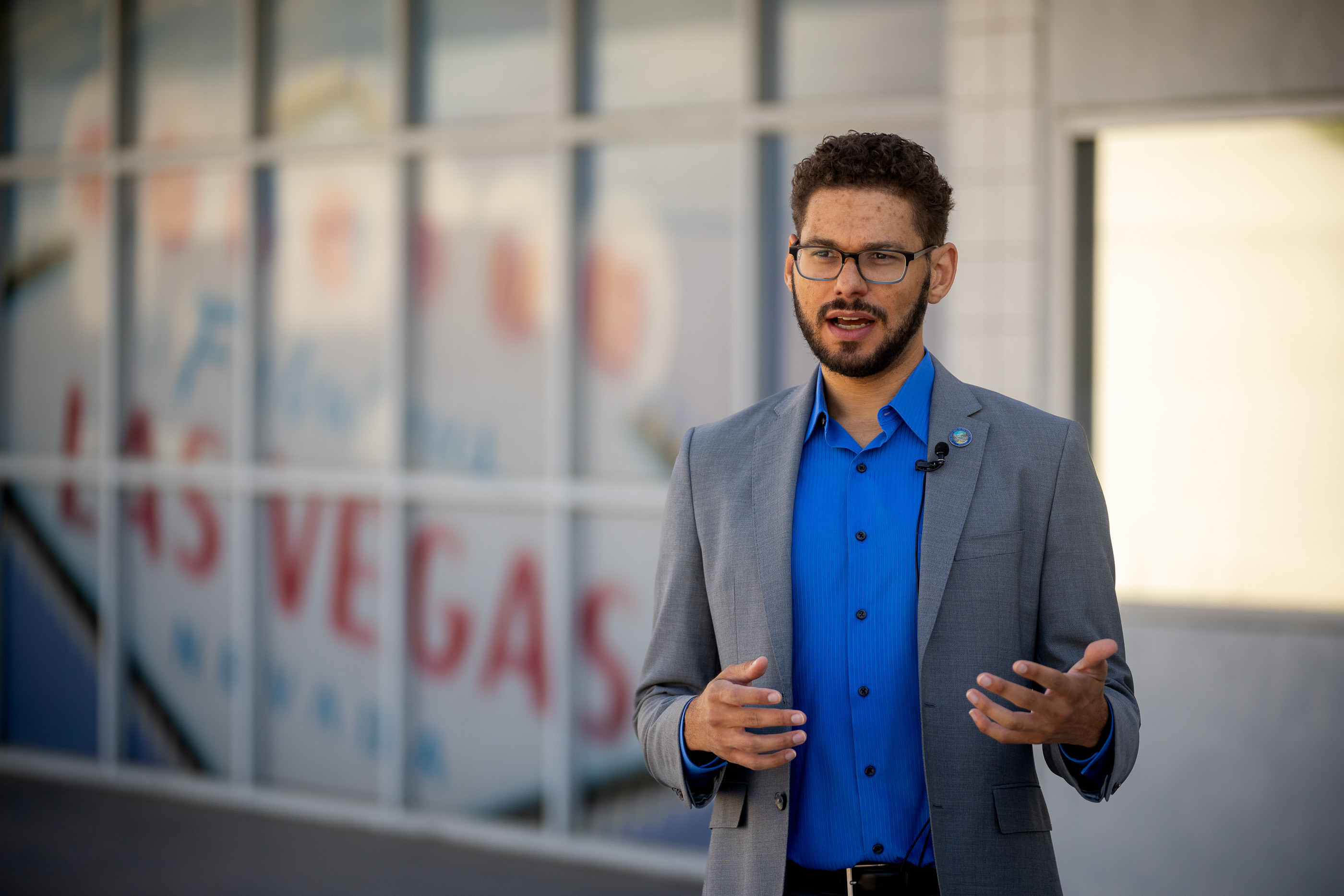
(Trent Nelson | The Salt Lake Tribune) Assemblyman Howard Watts in Las Vegas, Nevada, on Friday, Sept. 30, 2022.
“We’ve had incentive programs where people can voluntarily replace their grass with more water-friendly landscaping for years. This actually went and requires that properties retrofit and replace that grass. It’s mandatory,” he said.
Driving around the Las Vegas metro area, nonfunctional turf can be seen everywhere — on median islands, in front of shopping centers and business complexes. Entsminger said they have removed a lot of turf — but still have a long way to go.
“We’ve taken out enough turf in this valley in the last 20 years to lay an 18-inch-wide piece of sod around the globe at the equator. We’ve taken out a lot of grass. But we estimate when we implemented the nonfunctional turf ban, there were 3,900 acres of sod in the valley,” he said.
So far, Utah political leaders have largely resisted imposing more restrictions. Instead, they have continued to urge residents to do their part by voluntarily cutting water use. Watts defended the mandatory nature of their laws as a measure to conserve water. He pointed out the bills passed with bipartisan support and very little pushback from residents.
“Drastic times call for drastic measures. I think it’s time that every state along the river look at these big, bold policies,” he said. “Las Vegas is showing it can be done, it can be successful and it can be done with community support.”
What's your response to Solutions found for GSL in Sin City?
Does this reporting project make you feel hopeful? Concerned? Inspired? Surprised?
Selected responses will be used on social media, on our website or in our newsletter.

